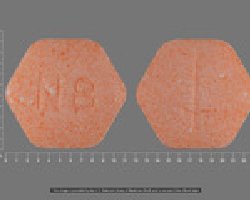Why Fentanyl is a Drug Dealer’s Dream—But a Family’s Nightmare
If you have been watching headlines that relate to drug overdoses, you’ve heard of fentanyl. And anyone working in law enforcement, drug rehab or emergency medical services knows far too much about this drug. It’s a relative newcomer on the illicit drug market but it’s created a fast, huge and destructive impact.
Fentanyl is a powerful opioid that’s illicitly manufactured in overseas labs, primarily in China, and then shipped to the United States. The buyer is often a drug dealer who will prepare this drug for sale to his addicted customers or the customers he hopes to addict. He might mix small amounts into powdered and diluted heroin to give the heroin more kick. Or maybe he will tell his customers that his product he’s selling is really fentanyl because some people seek out this powerful drug.
A Tragic Surge of Overdose Deaths from Fentanyl
Fentanyl is far more powerful than heroin, which makes it very easy for a person to overdose on this drug. Have you ever seen a chart like this one? Look at the category “Synthetic Opioids other than Methadone.” Those are primarily fentanyl deaths. You can see how they have skyrocketed in the last few years.

Recent news reports reveal that many drug dealers have started mixing fentanyl into the batches of cocaine, benzodiazepines, counterfeit opioid pills, ketamine, and methamphetamine they are selling. And some of their customers, not expecting opioids in these other drugs, are fatally overdosing as a result.
It’s very, very hard for any rational, caring person to grasp the way a drug dealer thinks. To a dealer, fentanyl presents a great opportunity to hook customers and make a ton of money. If a few customers die, there are always plenty of new customers that can be acquired.
Vast Amounts of Money to be Made
How much money? A report of a Congressional investigation that was released in early 2018 made it clear. Posing as first-time buyers of fentanyl, Congressional investigators corresponded with several Chinese pharmaceutical companies. While investigators didn’t end up making any actual purchases, they were subsequently able to track down financial records of 500 sales from these companies to American customers. They calculated that these buyers spent $230,000 on Chinese fentanyl, but they could have sold it for as much as $766 million on the streets of this country. That’s better than a 300,000% return on their investment. The allure of this drug is obvious.

It’s cheap and it’s so potent that a little bit goes a very long way. In New York, 64 kilograms of pure fentanyl were seized in 2017. Since it only takes two or three milligrams of fentanyl to kill a person, that fentanyl seizure was drug enough to kill 32 million people. That’s lots more than the entire population of New York State!
So a drug dealer can import a pound or two of fentanyl, mix a little of it into a large batch of heavily-diluted heroin, and start telling his customers about this potent product he’s got for sale. His costs are minimal but his profits are maximal.
Fentanyl in Other Forms
As noted above, fentanyl is now being found in a variety of other drugs popular on the illicit market. For example, it’s easy to mix fentanyl into cocaine because both drugs are powders. But why would a drug dealer do this?
According to a National Public Radio report, a drug dealer does this to hook a customer on his opioids without the customer’s knowledge. Imagine that his customer is a fellow who just likes to party on the weekend with some cocaine. Then he unknowingly buys fentanyl-laced cocaine from this dealer. Fentanyl is more addictive than cocaine, and once this customer uses it, he is likely to return to the dealer sooner than he would if his purchase had only contained cocaine. That’s because he’s now got a craving for more opioids—and he’s well on his way to being addicted. But he may not even realize his cocaine contained fentanyl!
Once a customer is hooked, he belongs to the dealer until he recovers from his addiction or dies. So to a drug dealer, adding fentanyl to other drugs he’s selling makes sense.
The dealer could also add the drug to the methamphetamine he’s selling, or the animal tranquilizer ketamine. If he gets a pill press shipped over from China—which Chinese companies are ready and willing to send—he can press the fentanyl into counterfeit pills colored to look like OxyContin or other prescription medications.
There have also been a few reports of fentanyl being mixed in with marijuana but there is no credible evidence to back up these reports.
A Family’s Nightmare

To understand this point, we only need to return to the chart above. In 2016, more than 20,000 families lost a loved one to synthetic opioids. In the vast majority of cases, these overdoses were from from drugs in the fentanyl family (there are dozens of similar formulas in this group). Also in this category, there were a few overdoses from tramadol, another synthetic opioid, but in America, this is a relatively small number.
For tens of thousands of families, fentanyl was the drug that triggered a nightmare from which these families may never recover—the sudden loss of a loved one from an overdose.
The fentanyl phenomenon makes it very real that anyone using cocaine, heroin, ketamine or methamphetamine, or misusing prescription drugs like Xanax or painkillers is at very great risk of becoming addicted to fentanyl or overdosing on it. Getting an addicted loved one to rehab quickly is now more vital than ever before.


 ®
®